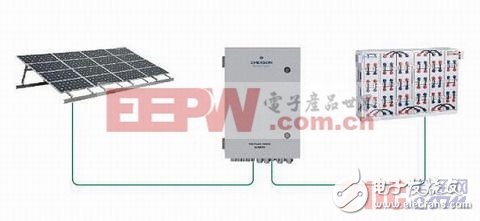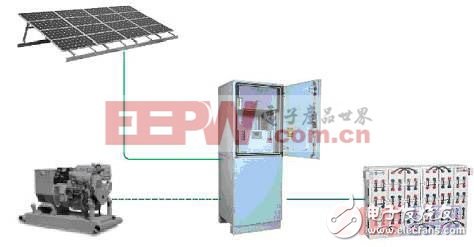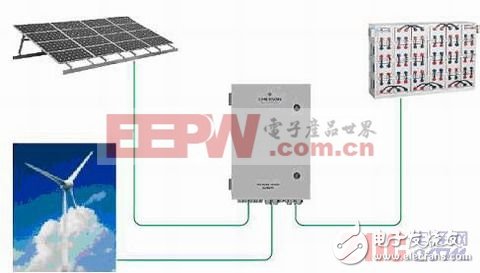With the completion of the telecom restructuring, China's telecom industry has entered a new era of "Three Kingdoms" and has accelerated the process of 3G. As a new topic for the three major business operators, 3G's development will inevitably put forward common requirements and common challenges for operators, such as 3G network planning and construction, network upgrade and evolution, new business development and innovation, and industrial chain building. The 3G network planning and construction is the primary basis and key step to achieve 3G applications. At present, in the 3G computer room network planning, operators must identify the following issues:
First, how to meet the application needs of high-speed data services in wireless networks. The direct innovation brought by 3G is the large-scale application of various new base stations, which means that the coverage of broadband wireless networks will increase, and the demand for outdoor computer rooms will also increase. However, compared with the indoor computer room, the application environment of the outdoor computer room is more complicated. The station is built in the mountains, plains, and valleys. The temperature difference and altitude are different for the equipment. The temperature, humidity, cleanliness, electromagnetic field strength, noise interference, The requirements for safety and security, leak prevention, power quality, vibration, lightning protection and grounding are not the same, and the adaptability of the environment and the flexibility of movement must be taken into account.
Furthermore, how to realize the network energy renewable cycle application and rebuild the life cycle. Energy conservation and environmental protection are the main results brought about by the application of 3G technology. For outdoor base stations, the characteristics of the base station should be fully considered, and various green renewable energy sources such as wind energy and solar energy should be converted and utilized as much as possible to reduce carbon emissions and achieve renewable energy recycling.
In response to these problems, Emerson Network Power proposes a 3G renewable energy base station solution that provides reliable, available, and green protection for the stability of next-generation 3G networks and the security of data information.
2. Emerson 3G Renewable Energy SolutionEmerson's renewable energy base station power supply system consists of four systems: SunnySure series solar controller, solar array, wind energy generator and hydrogen fuel cell. It can be applied to various 3G base stations in solar energy and wind energy resource-rich areas.
2.1 System working principle
The solar controller is the system control core of various renewable energy base stations, and integrates the independently developed SunnySure series solar controllers in Emerson's system. Emerson solar power supply system mainly outputs the energy of the square matrix composed of solar cells with conversion efficiency of up to 18% to the controller. The controller generates the required voltage and current to charge the battery by controlling the input and withdrawal of the solar array. At the same time, the load is supplied to the load through the battery, and the load is completely supplied by the battery at night or on a rainy day.
The maximum open circuit voltage of the input voltage generated by the solar array is 96V. The controller generates a corresponding floating charging pressure range and a uniform charging pressure range by controlling the input power board, and correspondingly floats or equalizes the battery according to the capacity and voltage state of the battery, and simultaneously supplies power to the load. When the battery voltage is too high, the output power board will release the load to protect the load device; when the battery voltage is too low, the output power board will also cut off the load to protect the battery. The controller also has reverse discharge protection function and polarity reverse connection. Circuit protection and other functions.
Emerson solar controllers can be wall-mounted or pole-mounted for easy application in a variety of applications, with an outdoor protection rating of IP55. At the same time, the controller also has a variety of charging interfaces to facilitate access to wind energy generators, mains, and oil engines, and can provide multiple power supply solutions based on the base station environment. As the energy storage component of the system, the battery is mainly used to store the energy generated by solar cells and other energy sources to facilitate power supply.
2.2, system design
(1) Independent photovoltaic power system solution
This solution is constructed by three systems: solar controller, wind energy generator and hydrogen fuel cell. When the weather is sunny or cloudy, the whole system is powered by solar energy; at night or in the rainy days, the solar energy will automatically stop supplying power, and the battery will discharge to the load. If it is normal night power supply, the next day will be After the sun, the output current of the solar array will charge the battery to supplement the energy loss of the night power supply.
In order to avoid overcharging of the battery and the impact on the communication equipment, the solar controller controls the output voltage not higher than 57.6V (voltage conversion mode and solar cell array switching mode), the maximum output current of the solar array can reach 90A, solar array Power the load and charge the battery pack. When the battery pack voltage is higher than 57.6V, the solar array should be cut away from each other to prevent damage to the battery and the main equipment.
This solution is applicable to remote and non-communication areas with abundant solar energy resources. The scheme is simple and easy to set up, the system is automatically managed and free of maintenance, and the daily operating expenses of operators can be greatly reduced. At the same time, the program also meets the requirements for energy conservation and environmental protection. It can achieve 100% energy saving, environmental protection, energy conversion and use of clean and pollution-free, and achieve energy saving and emission reduction targets.

Figure 1 Independent photovoltaic power system solution
(2) Photoelectric (oil machine) complementary power system solution
This solution is a complement to the independent photovoltaic power system solution. As can be seen from Figure 1, if the battery is continuously rainy, the battery controller will automatically or manually start the oil machine when the battery voltage drops to 48V (after about 60 hours of rain after the battery is sufficient). At this time, the oil machine supplies power to the battery and the load through the switching power supply. When the charging current to the battery is less than the set point, and the duration exceeds the small current delay and the charging T (T can be set according to the battery size), the solar controller shuts down the oil machine (at this time, the battery is basically sufficient, or It is solar energy that restores normal power supply). On a cloudy day and the oil machine fails again, the battery discharges to the load protection point, and the solar controller issues a command to stop the battery from supplying power to the load.
The program is suitable for areas with abundant solar energy resources and more rainy seasons. The power system consisting of photovoltaics and oil generators can improve the reliability of the power supply, realize the power supply for the remote base station, and remove the restraint of the power supply, thereby improving the coverage. For areas with unstable mains, it can improve the reliability of power supply and reduce the rate of power failure. It can be applied to areas with mains power on a large scale. In terms of energy saving, it can effectively save 30%-100%. Moreover, through the use of such commercial power (oil machine) and solar energy, the configuration of solar panels can be reduced, and the initial investment and operation and maintenance costs of the system can be effectively reduced.

Figure 2 Photoelectric (oil) complementary power system solution
(3) Wind and solar hybrid power system solution
The solution is simple and easy to set up, and can be applied to areas with abundant solar and wind energy resources. By complementing the landscape resources, we can maximize the use of energy and expand network coverage. In terms of maintenance, the solar controller can be used to comprehensively monitor and protect, and the voltage control principle can be used to effectively protect system equipment such as batteries and loads, thereby reducing the maintenance of the base station. This kind of scheme has strong regional adaptability and strong environmental adaptability. The solar controller can be used at -30°C~60°C, hydrogen fuel cells can be used in the temperature range of -40°C~60°C, and it can be used in hurricanes, hail and other bad weather. Under normal operation.
In addition, the two energy sources can be flexibly configured according to the conditions. At the same time, through perfect charging and discharging management scheme, the battery life can be maximized, and the system can be stably operated and the system investment can be reduced.

Figure 3 Wind and solar hybrid power system solution
3. The advantages of this solutionAs can be seen from the above schemes, Emerson's renewable energy base station solution is constructed using an off-grid power generation system, which caters to the needs of mobile stations such as mobile communication base stations and microwave stations that are remote and have no mains or lack of utility areas. At the same time, the program fully considers the characteristics of the site construction environment. The power supply energy is derived from the inexhaustible solar energy and wind energy. This is the most abundant renewable energy source. Solar energy and wind power supply have unique advantages and huge potential for development and utilization. Solar energy and wind power generation do not generate carbon dioxide, which is a clean and safe energy source. With this energy source, each 1000 base stations can save about 10 million kWh per year and reduce carbon dioxide emissions by about 10,000 tons. And most importantly, this clean energy has the characteristics of continuous regeneration and regular supplementation in nature, which can be recycled, so as to provide a stable and reliable power supply for the base station, and truly realize Stand", let the system "live". In the long run, the investment advantage of the scheme is obvious, and it can reach or lower than the traditional way of establishing stations in 3 to 5 years.
In addition, in the design process, Emerson 3G renewable energy base station solution also fully considers the application characteristics of 3G network, and also shows the following advantages in reliability, intelligence, flexibility, network expansion and other aspects:
(1) Reliability, the core system - Emerson SunnySure series solar controller adopts high reliability and maintainability design, two sets of batteries are connected, the maximum charging current is 200A, which can realize the automatic voltage identification of solar panels and solar cells. Automatic matching and automatic adjustment of the charging process and automatic control and protection of the discharge process. At the same time, the system introduces a forward-looking fuel cell energy system, and the controller system also adopts all-digital non-destructive control technology, which can achieve energy conversion efficiency of 99.6%, thus laying a good foundation for high reliability and high availability of the system;
(2) The intelligent design of the monitoring system truly conforms to the development trend of 3G network energy intelligentization and networking. Emerson solar controller adopts intelligent monitoring system, which can record charge, discharge and alarm information in real time, and can be remotely uploaded to the monitoring center to realize intelligent energy input management, battery management and power management, and effectively protect system equipment such as battery and load. Free of operation and maintenance.
(3) It can be flexibly built and easily expanded. The base station is easy to install and relocate, no wiring is required, and the networking is flexible. Power generation and system control use a modular architecture that allows users to selectively deactivate battery packs in an application that is easy to install and requires no tools to easily perform hot-swap maintenance in seconds. The most important thing is that users can use the flexible power module during construction to achieve a highly reliable, low-cost, high-efficiency backup power solution, which provides room for future network upgrades.
4, the conclusionThe energy issue has prompted developed countries to apply solar power, wind energy and other power generation technologies on a large scale. The improvement of economic level has also supported the promotion of renewable energy power generation technology in China, and the communication industry has entered a new stage due to the comprehensive promotion of 3G applications. . Under the premise of meeting the improvement of coverage, new requirements for energy saving and emission reduction have been put forward. Undoubtedly, Emerson Network Energy has great potential for promotion based on the renewable energy base station solution launched by the communication field for many years.
NON Standard Automation Machine
Non Standard Automation Machine,Unwinding Machine,Tinning Machine,Winding Machine
Jiangsu Lanhui Intelligent Equipment Technology Co., Ltd , https://www.lanhuisolar.com